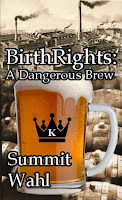 Welcome to our new home! We expect our new home to be ever more comfortable. I watch a lot of HGTV – House Hunters, Property Virgins, Property Brothers, Love It or List It – so I see lots of new homes. Let me assure you, the Riskies have moved in to space that is more “open concept” and all of our appliances are stainless steel and our counters, granite….Or the Regency equivalent.
Welcome to our new home! We expect our new home to be ever more comfortable. I watch a lot of HGTV – House Hunters, Property Virgins, Property Brothers, Love It or List It – so I see lots of new homes. Let me assure you, the Riskies have moved in to space that is more “open concept” and all of our appliances are stainless steel and our counters, granite….Or the Regency equivalent.
And who better to invite to our new home but Jane Austen, who will stay with us until her birthday December 16. In honor of Jane, we thought we would each take turns discussing What Jane Austen Has Meant to Me.
There will be prizes – including a grand prize of a $50 Amazon gift card! My prize today is the British Library Writers Lives edition of Jane Austen by Deirdre Le Faye. Eventually we will be using Rafflecopter for giveaways, but I don’t quite know how yet, so I’ll randomly choose a winner from the comments on this blog.
I’ve mentioned before that I came late to loving the Regency, not until I started writing in 1995. I’d read Pride and Prejudice and Sense and Sensibility in some English class along the way, but it wasn’t until my writing pals Helen and Julie introduced me to Georgette Heyer and Regency Romance (the Signets and Zebras) that I began to really fall in love with the Regency.
Helen, Julie, and I went to see the 1995 Amanda Root/Ciaran Hinds movie Persuasion, which had been a BBC TV production in the UK but released in theaters in the US. It was this movie adaptation of a Jane Austen book I’d never read that made the Regency come alive for me.
From the country house of the Elliots to the chic rooms in Bath to the simple seaside abode of the Harviles, the Regency world the move depicted seemed so real to me. Maybe it was because the whole movie was filmed on location, but, even so, the details were not prettied up for film. The livery of the Elliot footmen looked a bit shabby, as it would have for a baronet whose fortunes were dwindling. Skirts and boots got muddy during country walks, as they would have in a time without paved walkways. The dancing was boisterous but not polished and practices, as professional dancers would have performed. The hero and heroine were attractive but not “beautiful people.”
The Regency people in the story also acted in ways I believed were true to the period. The emphasis on status, on honor and obligation seemed genuine to me. There were bored privileged young women, proud impoverished ones, scheming social climbers. There were also “normal” people, like the Musgroves and the Crofts. And Ann and Wentworth, of course.
Jane Austen may have been exploring the role of persuasion throughout the story, but she also crafted a lovely, satisfying romance, with familiar Romance themes. Persuasion is both a reunion story (Ann and Captain Wentworth were once betrothed) and a Cinderella story (Ann, the put-upon sister finds great love in the end). The conflict was poignant – Ann regretted breaking her betrothal to Wentworth; Wentworth remained bitter that she threw him off in order to seek better prospects.
There’s a lovely villain in Ann’s cousin, William Elliot, who becomes intent on courting her, and more complications ensue when Wentworth considers himself obligated to marry the injured Louisa Musgrove. The steps Ann and Wentworth each make to find their way back to each other are subtle, but very satisfying and very typical of romance novels of today.
After seeing the movie, I had a picture in my mind that was my Regency. I read Persuasion and Pride and Prejudice and all of Jane Austen’s books, even Lady Susan. The social attitudes from Jane Austen’s books seeped into my brain, as did the language, the rhythm of the conversation.
So you might say Jane Austen helped create my Regency world!
Have you seen this version of Persuasion? What do you think of it? Comment for a chance to win today’s contest.
 Holiday Giveaway! And also remember to enter the Harlequin Historical Authors Holiday Giveaway. Today’s day is Sarah Mallory’s. For more details, go here.
Holiday Giveaway! And also remember to enter the Harlequin Historical Authors Holiday Giveaway. Today’s day is Sarah Mallory’s. For more details, go here.












